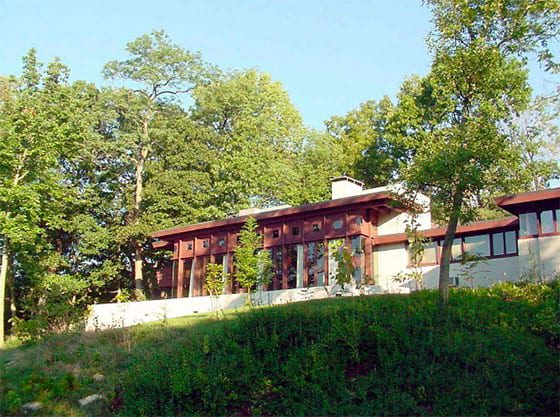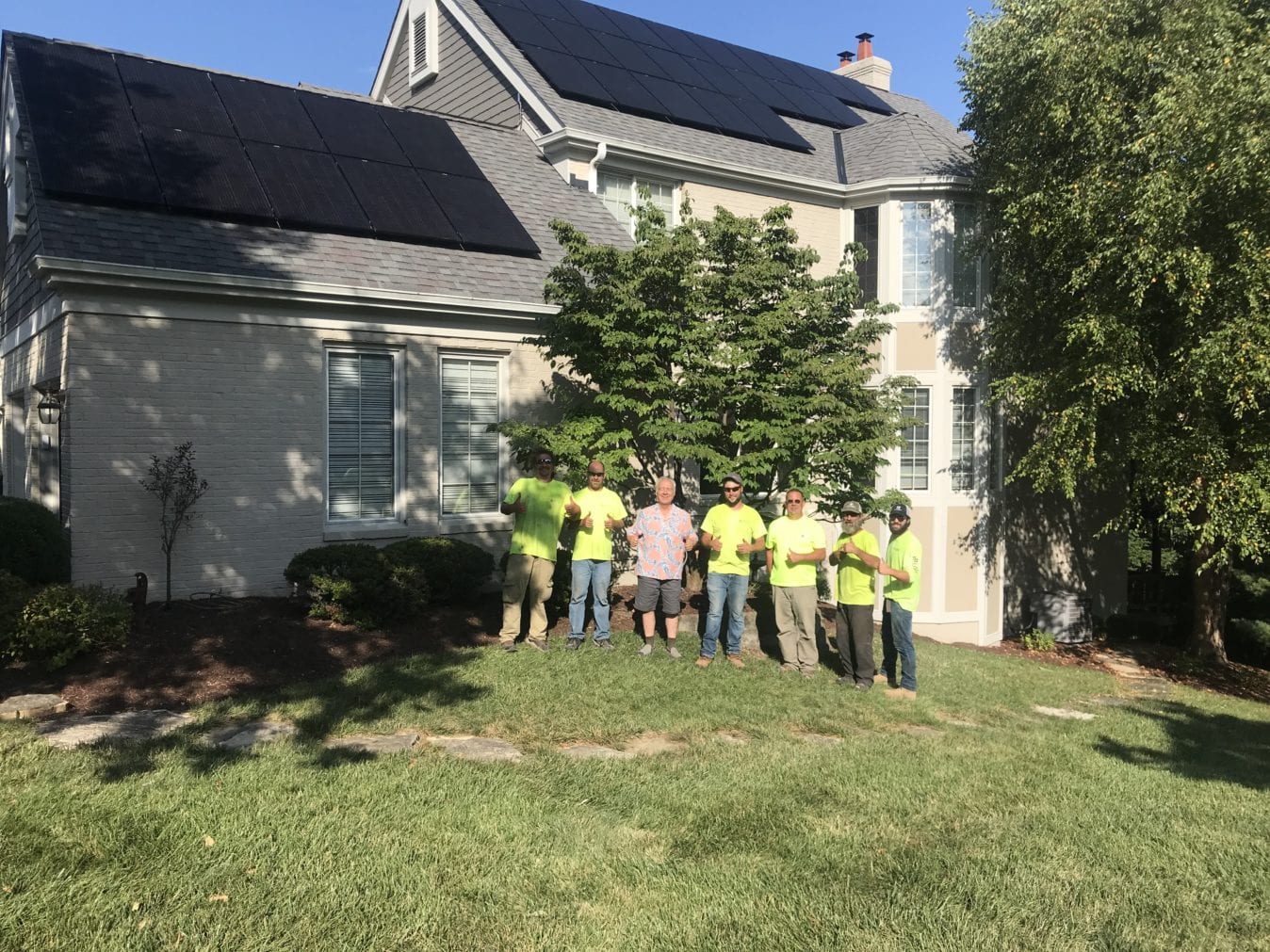Steve writes in his new book “Fusion Capitalism” that attending Greenbuild 2004 was a catalyst. He was moved to create clean energy by the world he was leaving his children. My own motivation comes from being an artist and designer. Steve spoke at a Leadership in Energy and Environmental Design education event to support the U.S. Green Building Council at my home in 2008.
I’m not an engineer or a scientist. I’m not a perfect sustainable person. And find it very hard to follow and comment on environmental issues like Steve Melink does. Steve’s done a great job of following the money and calling out the lobbying efforts of fossil fuel companies and the industries that depend on them. Consumer doubt and disinformation is so prevalent, no one could possibly call out all of them. Michael Mann’s new book “The New Climate War” also does an excellent job of educating the public about the history of disinformation.
I appreciate Steve Melink’s efforts and podcasts that dig in and expose the fossil fuel industry’s big lies. I couldn’t do it. I can show the public what sustainability looks like and that’s exactly what I’ve done with my LEED AP exam classes that were held in LEED buildings and the dozens of LEED Home tours I’ve done since 2014. Learning by seeing is the best way I can share my passion for sustainable design, living with the environmental and helping other species survive. I’m going to continue doing this outreach and promoting others that have other paths to education.
Steve built the first LEED Gold building in Ohio. In 2011, I wanted to turn our office into the first LEED Platinum office in Cincinnati. At the time, it was the highest scoring office space according to the Cincinnati Business Courier and included in a GreenBiz.com post on the Top Ten Greenest Offices in the World.
In Fusion Capitalism, Steve concludes it’s a no brainer to purchase renewable energy versus fossil fuels. But the reason they aren’t more widely adopted has to do with the lobbying efforts of the oil and gas industry. In my green worldview, I’ve found most people won’t do anything that isn’t cheaper or gives them a tax abatement.
Public and private institutions that look for long term savings build Green Buildings. The City of Cincinnati, University of Cincinnati, and Cincinnati Zoo are good examples. They understand the benefits of investing a bit more first cost to receive long-term building economies. And more publicly traded companies like Fifth Third, Kroger, Google and Microsoft invest in sustainability to encourage employment and save money. Zero carbon is a much more difficult goal.
Steve and I agree that a carbon tax is the best solution to stop climate change. It doesn’t have to be much. I offset my yearly carbon with a $30 offset from TerraPass. https://www.terrapass.com/carbon-footprint-calculator. But I’m one tenth the U.S. average.
I enjoy sustainable design as encouraged by the USGBC because for the first time in my life, I had a guide to good design. It provided an easy to understand way to judge success in your design and construction. I used the USGBC to improve my home (Frank Lloyd Wright designed) from an EUI of 90 to one of 30. I always wanted to be an architect.
I love science but know few scientists. They are only 1 percent of the populace not populous. Typically, they will make decisions based on their own conclusions of the facts. The general public doesn’t do that, they base decisions on peer opinion, trends and fashion.
Good design starts with vernacular architecture or just the common construction best practices passed down from generation to generation. The Shaker Community in Lexington Ky, that was active in the late 1800s and early 1900s is like that. Their home and furniture design was similar to the Bauhaus movement in Germany in the 1920s. New industrial processes developed for World War 1 brought many new materials and processes such as large plate glass to the building trades. Large windows was one of Frank Lloyd Wright’s signature details and that continued with the Mid-Century Modern Movement. But none of these movements continued to grow. What will make sustainable lifestyles popular and fashionable? Permaculture is one bright spot with very specific education and guidelines to the “old ways” of managing agriculture and a blend of natural relationships and food producing gardens.
Women are the predominate gender that cares about sustainability. They make up about 65 percent of the Facebook friends of the Greater Cincinnati Earth Coalition which produces the region’s Earth Day festival. I’m the Chair. And they make up the majority of visitors to my Green Cincinnati Education Advocacy brand and online publication, I founded and edit since 2009. The wealthier and more educated you are the more likely you are to be able to make choices that are more sustainable. But as I’ve found, that’s only a few percent of the population. Several women I’ve come to know on the internet have created businesses based around zero waste, no plastic, reusable shopping containers, and sustainable clothing lines. It is these products that have taken up the slack from the failure of modern design based on disposable fashion, single use products, subsidized energy and animal protein.
In 2019, we sold the Wright home and installed solar panels on our new home and haven’t paid a penny for electricity since. Now we are trying to eliminate all of the fossil carbon use in the home by replacing the fossil gas hot water heater and boiler. It’s amazing how inexpensive the panels were, how high performance they are and how many efficient electrical replacements for fossil gas there are. An induction cooktop will boil water in 5 minutes and there are no harmful offgases. It’s a fun time to be sustainable.
I was invited in 2018 to be a trustee to help the Cincinnati Contemporary Arts Center to achieve their Green Umbrella 2030 District goal of reducing their energy use by 50% by 2030 and achieve LEED Platinum. As the CAC Facility Chair, I moderated a panel at the 2021 Midwest Regional Sustainability Summit on, “Community Solar, District Heating and Cooling Systems.” I learned from Steve Hamstra, Vice President, Melink Geo and Solar, that you can use the sewer system as a source of heat for a building. A heat exchanger extracts the heat as it flows through your building. It will probably be the solution for the CAC’s goals along with an energy and humidity recovery unit.
Steve’s book is very well documented and a good source for arguments to take on the road, which he has done a superb job of interviewing many important persons in the energy sector with his podcasts. I’m looking forward to reading it again and continuing my education because as much as I like sustainable design, it’s not facing the lies head on.
My congratulations to Steve and another amazing book. I’m going to send it to many of my business friends that might decide to start moving the needle after reading it. You just have to take many small steps, one at a time. And we’re lucky the goal has moved from energy efficiency to fossil carbon reduction. The nuances of the difference are more attune to a human’s needs and wants and the since carbon is the substance life is made of, environmentally sensitive products reflect natural life cycles and evolution.
From the recent editorial in the New York Times, Why Spy Agencies Say the Future Is Bleak
Climate change, technology, disease and financial crises will pose big challenges for the world, an intelligence report concludes. – There is one cheery scenario thrown in, “Renaissance of Democracies,” in which the United States and its allies are leading a world of resurgent democracies, and everybody is getting happier. Its apparent purpose is to show that people could, in principle, turn things around. But nothing in the report suggests it is likely.” I have to agree that active, multiple and inclusive democracies may be the only solution to stop humanity’s extinction of all other species on earth that haven’t been enslaved. https://www.nytimes.com/2021/04/15/opinion/global-trends-intelligence-report.html
From Michael Mann’s Rolling Stone interview with Jeff Goodell about his forthcoming book, “The New Climate War,” Policy change is only going to happen if we hold our politicians accountable using our voice. And that means voting. It means voting, but it means using every other means at our disposal to basically hold our policy makers accountable and make sure that they act on our behalf rather than on the behalf of the polluting interests who too often fund their campaigns. https://www.rollingstone.com/politics/politics-features/michael-mann-the-new-climate-war-book
In my opinion Environmental Democracy is the Fusion Capitalism of the future. I plan on getting to know my legislators, understanding the law and working for preservation of all species. The Environmental Protection Agency was founded along with Earth Day 51 years ago and still is a blueprint for the future.
Greta Thunberg is correct when she says, “We already know the solution to climate change, we need the courage to act.”
Chuck Lohre, LEED AP ID+C, SMPS-CPSM
Editor
Green Cincinnati Education Advocacy
www.green-cincinnati.com
513-260-9025
[email protected]
535 Windings Court, Cincinnati, OH 45220
The following are Steve Melink’s hashtags
#sustainability #energy #cleanenergy #climatecrisis #podcasts #worldearthday #zerocarbon #solarpower #windpower #batterystorage #electriccars #electrifyeverything #capitalism #fusioncapitalism #freemarkets #unitedstatesofamerica #government #policymaking #parisagreement #leadershipmatters #brandleadership





